Red Wine Vinification
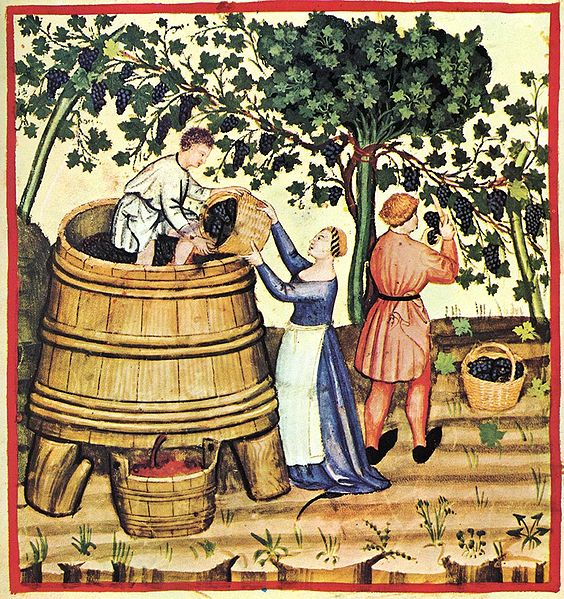
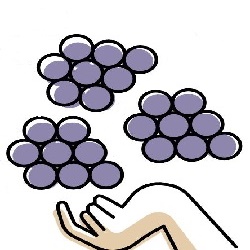
| HarvestingBlack grapes are harvested and sorted. |
CrushingAfter harvesting, the grapes are crushed to release the must. | |
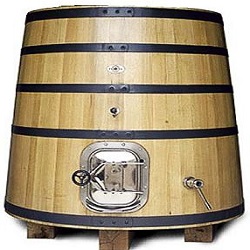
| FermentationYeasts transform the red grape juice into wine (sugar into alcohol). |
PressingPressing separates the juice from the skin, seeds, and stems. | |
MaturationMaturation refers to the time after fermentation. | |
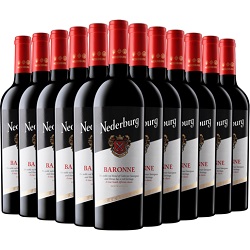
| AgingAging refers to the changes in wine after bottling. |
Level 1 / Level 2
This a simplified description of how to make a red wine.
A more complete description is found in Level 2.
Harvesting

Quality red wines are produced from hand-picked grapes
The first step to produce a red wine, is to harvest black grapes.
Common black grapes are: Cabernet Sauvignon, Pinot Noir, Merlot, Syrah/Shiraz.
Sorting

Grapes are sorted before crushing
After harvesting, grape clusters are sorted for quality.
Unripe, diseased, and damaged grapes, bugs and leaves are removed.
Crushing
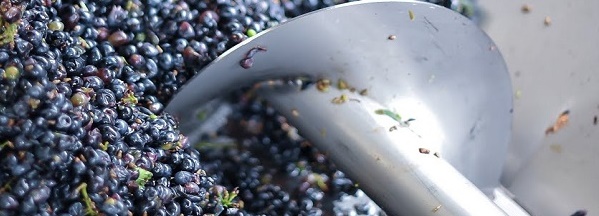
Grapes are crushed to release the must
"Vinum mustum"="Young wine"
After sorting, the grapes are crushed to crack the skins and release the must.
Must is the crushed grape juice that contains flesh, skins, seeds, and stems.
Alcoholic Fermentation
Alcoholic fermentation transforms grape juice into wine.
Yeasts transform the sugar in the juice into alcohol (and CO2).
=
Fermentation in stainless steel does not add ekstra aromatic compounds.
Fermentation in oak barrels adds secondary flavors (vanilla, cedar, smoke).
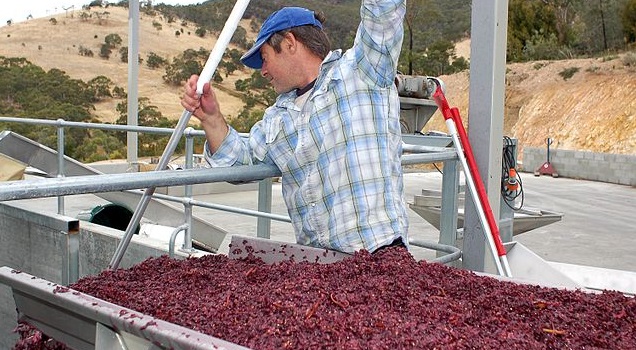
Feeding crushed Pinot Noir grapes into the fermenter.
The Cap
During fermentation, a cap floats to the top (skins, stems and seeds). If the cap is left on the top, the extraction of colors, tannins, and aromas will be reduced.
As a daily procedure, the cap is mixed back into the juice through 2 techniques: Pumping Over and Punching Down.
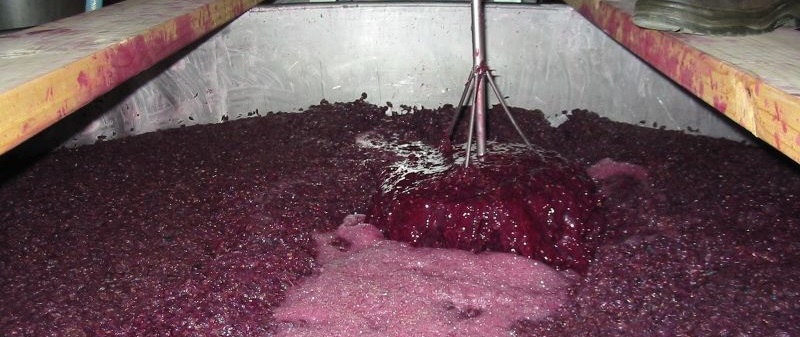
The cap of grape skins that forms on fermenting red wine.
Pumping Over
Pumping over (French:Remontage) means pumping wine from the bottom of the tank and pour it over the top of the fermenting must to submerge the skins and to release carbon dioxide.
Punch Down
Punch down (French:Pigéage) means breaking up the cap on the surface of the fermenting wine, and push it back and let the juice extract more color, tannins, and flavors from it.
Pressing

Pressing is the major difference between white and red wines
Pressing separates the liquid from the solids (skins, seeds, stems).
Red wines are fermented with the solids and pressed after fermentation.
White wines are pressed before fermentation to avoid contact with the solids.
Maturation
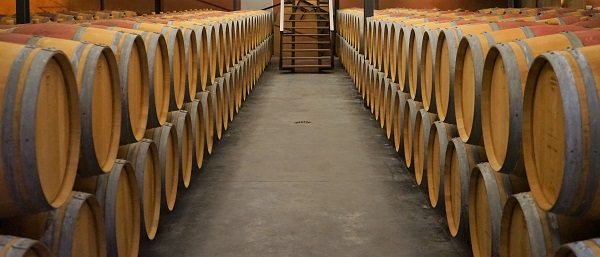
Maturation refers to the period after Fermentation before Bottling
Maturation refers to the period after fermentation and before bottling.
Some wines are made for early drinking, but most red wines can benefit from maturation and aging.
Wine is alive and goes through a life cycle where maturation is an essential process. It allows wine to stabilize and develop color, aromatics and balance.
Wine is alive means also that there is life inside the bottle, a microbial ecosystem living at a slower pace in constant change (metabolism).
Yeast, bacteria and fungi are ever present, they have a faster metabolism in the beginning due to increased nutrients, diversity and microbial life activity.
With time, and keeping temperature and pressure constant inside the cellar, the metabolism slows down.
Clarification and stabilization is also a part of this phase.
In Steel Tanks
Maturation in steel or fiberglass tanks does not change the aromas of the wine.
In Oak
Maturation in oak changes the flavors of wine. Grape aromas fade and oak flavors appears (vanilla, cedar, smoke).
Aging
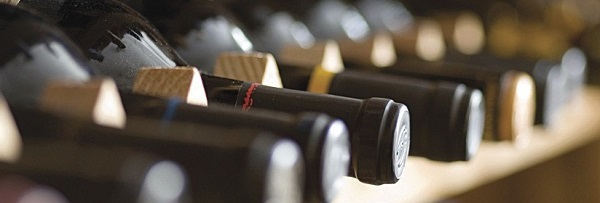
Aging can improve the quality of wine
Aging (aka cellaring) refers to the changes in wine after bottling.
Aging has proven to improve the characteristics of wine and stimulate the birth of new aromas mouth feeling of tannins are rounded and smoothed out.